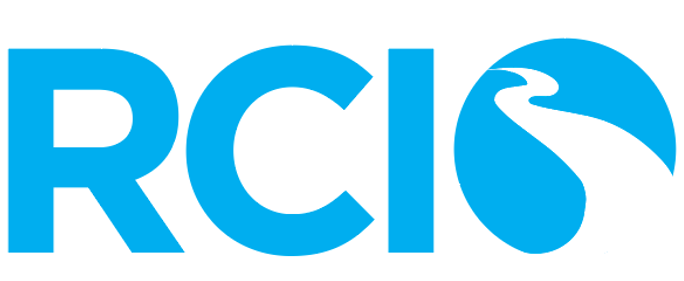Unobtrusive Sleep Tracking and Occupational Well-being in Emergency Physicians
Publisher
University of Tennessee at Chattanooga
Place of Publication
Chattanooga (Tenn.)
Abstract
Emergency physicians (EP) require sufficient sleep to provide optimal patient care. Sufficient sleep may lead to improved cognition and other psychological factors that are especially vital in high stress situations, such as those encountered in the emergency department; however, EP frequently work long and irregular hours under great stress, which can lead to a decline in sleep health. Most studies in the occupational health sphere track sleep with self-reported data, which is subject to limitations and biases, and there is little research using objective sleep data. By examining sleep longitudinally with objective measures, researchers are better able to understand the effects sleep has on fatigue, burnout, and overall well-being. A deepened understanding can enable better management of sleep in the healthcare sector, ensuring physicians are able to protect their health and well-being and patient safety. This study examines whether objective sleep measures predict self-reported health and well-being outcomes in EP. 39 EP participated in a longitudinal study over five months as part of a larger six-month study. They completed monthly surveys to self-report their sleep health (Buysse, 2014), fatigue (Frone & Tidwell, 2015), emotional exhaustion (Maslach et al., 1997), burnout (Muir et al., 2023), and professional fulfillment (Trockel et al., 2015). Sleep duration and sleep efficiency were continuously measured using Oura rings. Linear mixed models were implemented to examine how the objective sleep variables predicted subjective outcomes, controlling for individual differences between physicians. Correlational analyses between the study variables revealed multiple associations – specifically, sleep duration was correlated with subjective sleep health (ρ = .26, p < .001) and sleep efficiency was correlated with professional fulfillment (ρ = .23, p < .01) and sleep health (ρ = .37, p < .001). Linear mixed models found two significant relationships after accounting for individual differences. Average sleep duration significantly predicted professional fulfillment (β = .11, SE = .05, p = .04) and sleep efficiency significantly predicted sleep health (β = .09, SE = .04, p = .03). These findings support sleep efficiency as a predictor of overall sleep health. While objective sleep measures did not predict other self-reported well-being outcomes in this study, a significant relationship was found for Professional Fulfillment, suggesting that sleep may play a role in a physician's overall feelings towards their career. Future studies could aim to explore this area of impact further with more assessments of Professional Fulfillment, objective measures of sleep, and perhaps larger sample sizes. This project is partially supported by the Clemson University Creative Inquiry program.
Subject
Industrial and organizational psychology
Document Type
posters
Language
English
Rights
http://rightsstatements.org/vocab/InC/1.0/
License
http://creativecommons.org/licenses/by/4.0/
Unobtrusive Sleep Tracking and Occupational Well-being in Emergency Physicians
Emergency physicians (EP) require sufficient sleep to provide optimal patient care. Sufficient sleep may lead to improved cognition and other psychological factors that are especially vital in high stress situations, such as those encountered in the emergency department; however, EP frequently work long and irregular hours under great stress, which can lead to a decline in sleep health. Most studies in the occupational health sphere track sleep with self-reported data, which is subject to limitations and biases, and there is little research using objective sleep data. By examining sleep longitudinally with objective measures, researchers are better able to understand the effects sleep has on fatigue, burnout, and overall well-being. A deepened understanding can enable better management of sleep in the healthcare sector, ensuring physicians are able to protect their health and well-being and patient safety. This study examines whether objective sleep measures predict self-reported health and well-being outcomes in EP. 39 EP participated in a longitudinal study over five months as part of a larger six-month study. They completed monthly surveys to self-report their sleep health (Buysse, 2014), fatigue (Frone & Tidwell, 2015), emotional exhaustion (Maslach et al., 1997), burnout (Muir et al., 2023), and professional fulfillment (Trockel et al., 2015). Sleep duration and sleep efficiency were continuously measured using Oura rings. Linear mixed models were implemented to examine how the objective sleep variables predicted subjective outcomes, controlling for individual differences between physicians. Correlational analyses between the study variables revealed multiple associations – specifically, sleep duration was correlated with subjective sleep health (ρ = .26, p < .001) and sleep efficiency was correlated with professional fulfillment (ρ = .23, p < .01) and sleep health (ρ = .37, p < .001). Linear mixed models found two significant relationships after accounting for individual differences. Average sleep duration significantly predicted professional fulfillment (β = .11, SE = .05, p = .04) and sleep efficiency significantly predicted sleep health (β = .09, SE = .04, p = .03). These findings support sleep efficiency as a predictor of overall sleep health. While objective sleep measures did not predict other self-reported well-being outcomes in this study, a significant relationship was found for Professional Fulfillment, suggesting that sleep may play a role in a physician's overall feelings towards their career. Future studies could aim to explore this area of impact further with more assessments of Professional Fulfillment, objective measures of sleep, and perhaps larger sample sizes. This project is partially supported by the Clemson University Creative Inquiry program.

Department
University of Tennessee at Chattanooga. Dept. of Psychology